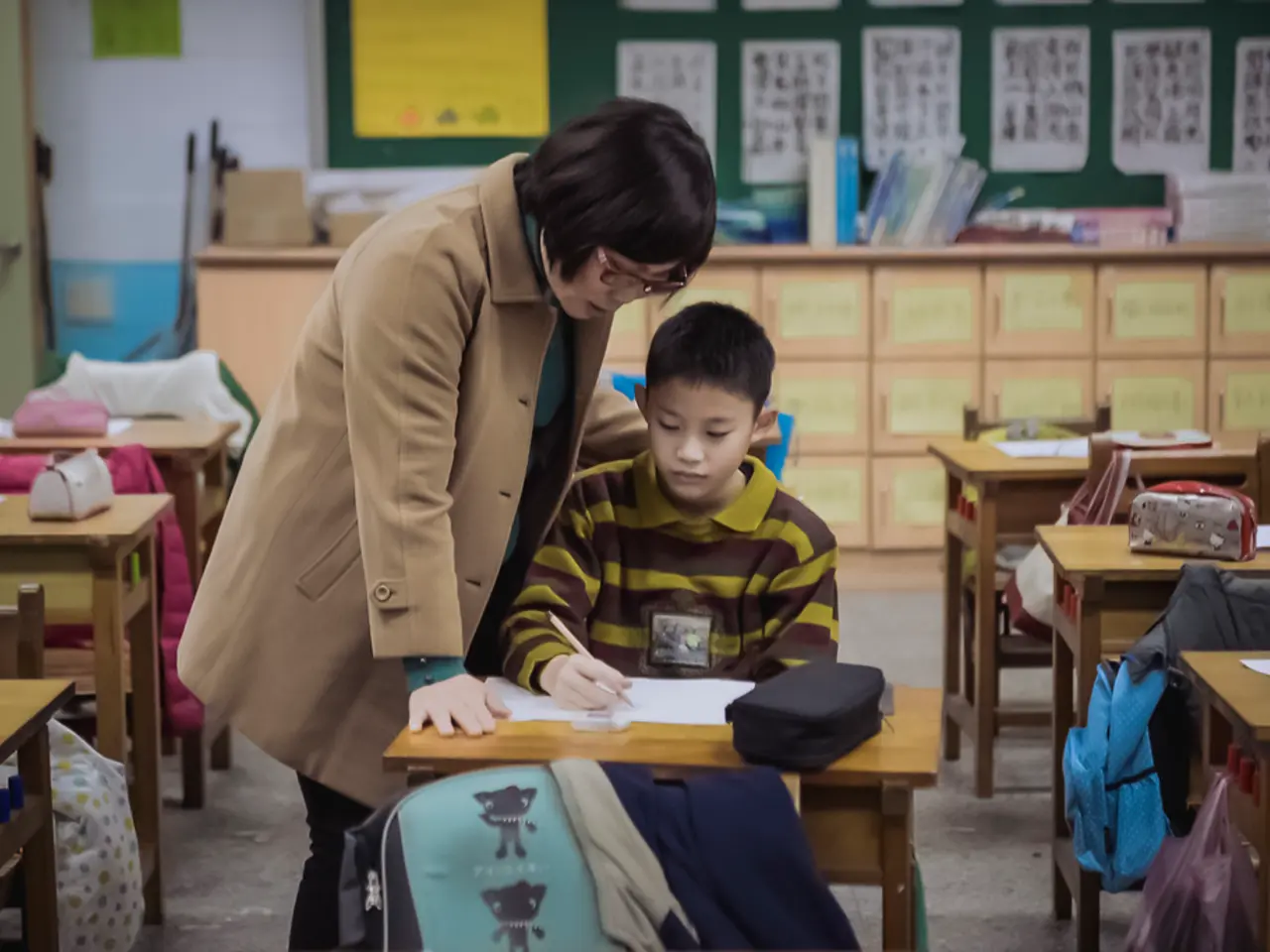AI Implementation in Special Education: Exploring Legal Implications
Artificial Intelligence (AI) is making its way into special education classrooms, promising to revolutionize the way teachers approach instruction and support students with disabilities. However, its impact extends far beyond the expected improvements in efficiency and personalization.
Teacher Agency Enhanced, but Complicated by AI
AI acts as a support system rather than a replacement for teachers, augmenting their ability to tailor instruction through real-time feedback and ongoing insight into student learning. Teachers gain tools that provide continuous data on individual students’ struggles and progress, allowing more informed interventions and personalized approaches. This can lead to feeling more empowered, especially in large caseloads typical in special education.
However, the introduction of AI also introduces a new dynamic in the classroom where AI itself influences decision-making, potentially challenging traditional teacher autonomy and requiring adaptive comfort with technology integration.
Perception of Students with Disabilities Enriched
AI enables highly individualized lesson plans, integrating translation and culturally relevant resources, allowing students with disabilities or language barriers to feel seen and understood in ways traditional materials often cannot provide. This may change teacher perceptions by revealing nuanced learner identities and potentials previously obscured, fostering a more strength-based, inclusive view of students rather than deficit-focused perspectives.
Shift in Focus Towards Relationships and Creativity
Platforms that drastically reduce paperwork free up special educators’ time to dedicate more to direct therapy and relational engagement. This can enhance teacher agency by shifting focus from bureaucratic compliance constraints to purposeful, creative teaching practices, potentially improving both teacher morale and student outcomes.
Potential Risks and Challenges
While AI provides continuous insights, teachers may risk over-relying on algorithmic feedback, which could narrow their professional judgment or inadvertently bias perceptions if the AI models do not fully capture student contexts or if they influence how teachers interpret student behavior or needs. This dynamic can subtly affect student agency—the ability of students with disabilities to have voice and choice in learning—if AI-driven decisions supersede collaborative, human-centered teaching approaches.
Emerging efforts to involve students with disabilities and educators in AI development promote tools that better match diverse learning needs. When AI reflects learner voices and nuances, it can empower teachers to see students through a lens of potential and boundary-free learning, influencing perceptions towards greater optimism and inclusivity.
A Catalyst for Systemic Change
The language used to frame the use of AI in special education should position it as a catalyst for systemic change to support all learners in an inclusive setting. Schools and administrators should be proactive in addressing the positive and negative impacts of AI on students and educators in special education, ensuring that AI is used to support, not replace, teachers' professional judgment.
Schools need to support teachers as they navigate shifting professional roles when using AI, providing training and resources to help them make the most of these new tools while protecting their autonomy and professional discretion. Schools should create specific rules for using AI in student programming to increase transparency, and statements about the school's AI use in student programming should be added to student handbooks, registration information, and the school's general AI policy.
A review on Artificial Intelligence in Special Education was conducted by Drigas and Ioannidou in 2013, highlighting the potential benefits and challenges of this emerging technology in the special education landscape. As AI continues to evolve, it is crucial for schools to stay informed and adapt their practices to best serve the needs of all learners.
This article was written by the Human in the Loop, with AI used for partial edits to ensure clarity and readability. It is important to remember that AI should not be seen as a magic solution to overworked teachers supporting students with special needs. Rather, it should be viewed as a tool to enhance and support the vital work that teachers do every day, helping them to reach students in new and innovative ways.
[1] Drigas, A., & Ioannidou, M. (2013). Artificial intelligence in special education: A review. Journal of Educational Technology Development and Exchange, 6(1), 1-35. [2] Kozleski, M. (2021, October 15). How AI is Changing Special Education. EdTech Magazine. Retrieved from https://edtechmagazine.com/k12/article/2021/10/how-ai-changing-special-education [3] Parette, H. P., & Knokey, D. (2018). AI in special education: A new frontier. The Journal of Special Education Leadership, 32(1), 16-23. [4] Rieger, M. (2021, March 30). The Impact of AI on Teachers in Special Education. EdTech Review. Retrieved from https://edtechreview.in/2021/03/the-impact-of-ai-on-teachers-in-special-education/ [5] Sinclair, S. (2020, November 10). The Potential and Perils of AI in Special Education. EdSurge. Retrieved from https://www.edsurge.com/news/2020-11-10-the-potential-and-perils-of-ai-in-special-education
- In special education classrooms, AI functions as a complement to teachers, providing them with real-time feedback and insights into student learning, enabling teachers to tailor instruction more effectively.
- The implementation of AI in special education may enhance student agency by integrating culturally relevant resources and adaptive lessons, helping students with disabilities or language barriers to feel seen and understood.
- By reducing paperwork and administrative tasks, AI allows special educators to focus on direct therapy, relational engagement, and creative teaching practices, potentially leading to improved morale and student outcomes.
- There is a risk that teachers may over-rely on AI feedback, potentially narrowing their professional judgement, and AI's algorithmic decisions might inadvertently bias perceptions if they don't capture student contexts or if they influence how teachers interpret student behavior or needs.
- AI has the potential to be a driving force for systemic change in education by promoting an inclusive learning environment, but schools must address the positive and negative impacts of AI on educators and students in special education, ensuring its use is guided by professional discretion and transparency.




